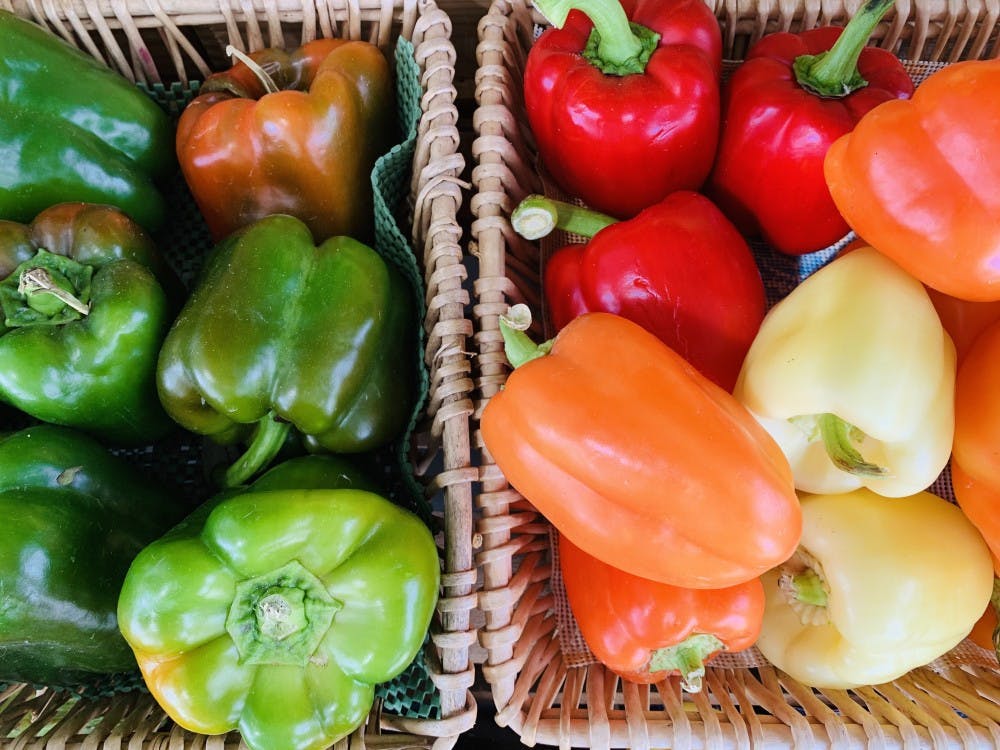Grocery shopping can be a daunting experience, but it is something I personally look forward to every week. I consider it a stress-relieving activity and love strolling through aisles, aimlessly browsing and waiting to be inspired by a product that jumps out to me. Unfortunately, a majority of the time I have to be in-and-out due to my schedule, leaving no time for browsing and following my stomach’s desires.
Having a grocery list is useful in adhering to certain time constraints, making grocery shopping efficient and also keeping to a budget. There is nothing more annoying than overspending at the grocery store week after week. It is important to know how to navigate and how to shop.
Some tips for grocery-store beginners — most grocery stores are set up in similar ways. Fresh and unpackaged foods will be along the perimeters. This mostly refers to produce, meats, dairy, fish and bakery items. An efficient and healthy way to grocery shop is to focus mostly on shopping around the perimeter.
I also want to make a note on fruits and vegetables. If you know you can’t eat your produce within a week, stick to frozen options. These have an almost infinite shelf life in your freezer, and if bought without additives — like hidden salts or sugars — are just as healthy. So when it comes to choosing fresh or frozen, it’s up to you!
Taking how grocery stores are structured into account, I’m going to list my favorite items under each category of food — some in order of preference, some not. Keep in mind that all of these are interchangeable with your own dietary preferences.
Proteins
- Eggs — Eggs are a staple. You need eggs for recipes, baking and — my personal favorite — scrambles, which are great for breakfast, lunch and dinner. You can also hard-boil them for snacks or quick additions to meals — so if anything, just get eggs. Try to get cage-free, pasture-raised eggs.
- Rotisserie chicken — This is my go-to protein. I love having chicken for dinner paired with a sweet potato and vegetables — then using the leftovers for sandwiches and salads all week. But you can also easily shred or slice the chicken and use it in recipes. Rotisserie chicken adds great flavor and a source of protein to pastas and stir-fry.
- Salmon — It’s my favorite dinner protein because of its versatility, great taste and nutritional benefits of healthy omega 3 fatty acids, which are great for your heart. Here’s my favorite recipe.
If you are vegetarian or vegan, tofu, tempeh, legumes or faux meat are great protein sources.
Vegetables
The first five items on this list are my weekly buys, while the others are seasonal, for specific recipes or when I have a certain craving. These vegetables are my favorite because they’re tasty, easy to throw into stir-fry meals and salads and can be used in many recipes. My favorite use of vegetables is just steamed as sides for dinner and lunch.
- Carrots
- Broccoli
- Snap peas and/or green beans
- Green leaf lettuce
- Sweet potatoes
- Brussel Sprouts
- Bell peppers
- Mushrooms
- Parsnips
- Onion
Fruits
Likewise, the first five items on the list are my weekly buys. Berries and bananas are quick additions to oatmeal and yogurt bowls. I also like to saute apples with some cinnamon to add to oatmeal or slice them with peanut butter for a midday snack. Avocados hold healthy fats — great for toast, salads, sandwiches and many other meals. The others on this list are also favorites of mine when they are in season, but the first five are typically found throughout the year in some capacity — with the exception of berries, which are more affordable when frozen in the winter.
- Blueberries
- Strawberries or raspberries
- Bananas
- Apples
- Avocados
- Grapes
- Peaches
- Cherries
- Melons
Dairy/Non-dairy
- Greek yogurt — Siggi’s and Fage are my favorite brands. I love having this to make yogurt bowls for a healthy snack and breakfast filled with protein, probiotics, vitamin D and calcium — great for your digestion and bone sustenance.
- Unsweetened plain or vanilla almond milk for oatmeal and other recipes — I prefer nut milk in oatmeal because of the taste, but you could get regular milk or just use water. This is also a great option for vegans and vegetarians. Some brands even include vitamin D which may be lacking in a non-dairy diet.
- Unsalted butter — great to have on hand for recipes and toast
- Whipped cream cheese — perfect for toast and bagels
If you are a vegetarian or vegan, there are great non-dairy cheese alternatives out there, like almond-based cream cheeses and other nut or legume-based milk.
If you are lactose intolerant — Siggi’s brand makes a lactose-free yogurt that I love. I find that eating this specific yogurt feels great on my digestive system — it is made without the lactase enzyme, so it can be digested by those who are lactose-intolerant.
Bakery
- Fresh-baked sourdough or another whole-grain bread — these are healthier alternatives which don’t include additives. Whole-grain breads also have fiber from whole-wheat and seeds, which helps you stay fuller for longer and aids in digestion.
- Fresh-baked item for dessert
The aisles in the center of the store are usually where you are prone to buy unnecessary items and get sucked into advertising. However, there are select products you may still need.
Pantry staples
In no apparent order, these are some pantry staples I like because of their versatility and convenient usage in many meals.
- Pasta — whole grain, chickpea pasta, legume pasta or regular
- Rice — whole grain or black rice
- Sauce jars — Rao’s preferably, but it can be pricey when they’re not on sale. Opt for jars without added sugar.
- Nut butter — peanut, cashew and almond butters are my favorites. I love Georgia Grinders, Trader Joe’s brand, Ted’s and Crazy Richard’s.
- Olive, coconut or avocado oil — healthy alternatives to canola oil, especially if bought organic to certify they are not genetically modified
- Oatmeal — buy this from the bulk section for a cheaper price
- Light brown sugar
- Nuts — buy these from the bulk section for a cheaper price
- Granola/protein bars — GoMacro and Perfect Bars are my favorites. Perfect Bars are found in the refrigerated section.
- Cereal/granola — Purely Elizabeth is my favorite granola because it uses all-natural ingredients and tastes great. Kashi has great, tasty and affordable options for cereal.
I hope you take this list with you the next time you venture to the grocery store and remember that navigating does not have to be as complicated or as daunting as you think. There are plenty of great options — you just have to know where to look for them.







